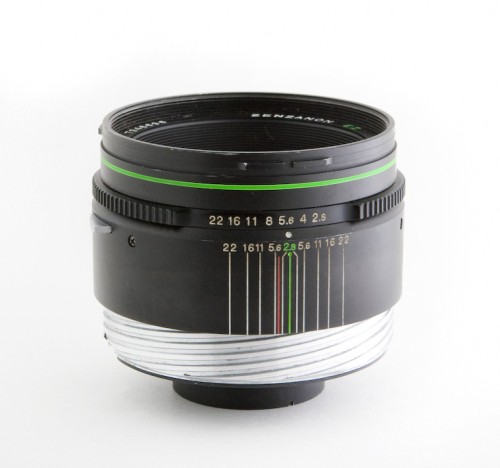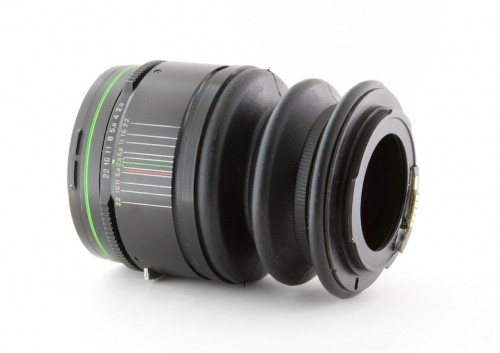Tilt-shift lenses have a few specialized uses. For example, they can alter the plane of focus by “tilting.” This can be used to create a sharp focus along something that is not perpendicular to the film/sensor, or to create an interesting depth of field that can’t be achieved with a normal lens. Depending on the subject, this crazy DOF can make a life-size scene appear to be a miniature–pretty cool! The other function of a tilt-shift lens is, you guessed it, “shifting.” This is most commonly used in architectural photography to prevent converging-lines distortion. For a more thorough read on tilt-shift photography, visit the Wiki on it. Read on to see how to make your own.
To get the most out of a tilt-shift lens, you need your lens to project a larger image circle than that of your camera. For example, to make a tilt-shift lens for a 35mm camera (APS-C, et al.), you could use a lens from a medium format camera. I chose a Bronica Zenza 75mm which is a medium format lens. Because it projects a larger image circle than that of a 35mm lens, when tilting and shifting this lens, the effective image circle will still cover the sensor of my dSLR.
To start, I removed the focusing ring and lens mount. It was large, heavy, unnecessary, and removing it made mounting the bellows MUCH easier. I don’t have instructions on this as each lens is different. Start by unscrewing the mount/backing plate. Then you may be able to just unscrew the focusing ring.
Next, you need some kind of bellows. I used a shock boot that I got from a local 4×4 shop, which was only $5. To determine the proper length, in a “clean” environment (i.e., not in a sandstorm) hold the capless lens in front of your capless & lensless camera body while looking through the viewfinder and move it in and out. Look at things near and far to find a good focus spot in the middle of the range. You want to be able to focus on things in close as well as “infinity.”
The next part you need is an M42 extension tube. If you follow the pictures it’s pretty easy to see how it’s attached. It ‘pops’ in and is then secured with a zip-tie. The other end of the bellows just stretches over the focus-ring threads on the lens body. I then used a zip-tie to secure it.
To finish it off, just screw on an M42 to EOS adapter. Since this lens is more like a Lensbaby and not a precise $2,000 Canon TS-E lens, I thought having a functioning autofocus confirmation in-camera would be helpful so I got an M42 to EOS adapter that has an AF confirmation chip. This definitely makes using the lens easier as the smallest movements completely alter the focus, which can be hard to pinpoint using the small viewfinder.
And finally, a photo made using this lens:
Closing notes: Depending on what you photograph, a 75mm lens might be a little long. Eventually, I’d like to make another TS lens using a shorter (wide angle) medium format lens.






Leave a Reply